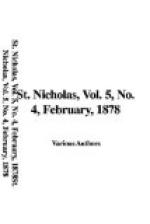Can you see our party trudging along? Beyond the village were more paddy-fields, from which occasionally a great white paddy-bird arose. I shot one of them, to the great delight of our coolie, who pronounced it No. 1 good chow-chow; but Charley and I were much more pleased at the sight of several English snipe. Reaching an old lotus-pond, a shot scared up these birds almost in myriads, and a good bunch of them promised a very welcome addition to our dinner. Meanwhile we had been following a creek, which we now needed to cross. But before long Aling espied a man in the distance at work with a huge buffalo, and exclaiming, “Hi-yah! belly good walkee now,” rushed off in that direction. He soon returned with the buffalo and his owner, and indicated that we could cross on the back of the former. The huge, ungainly beast threw up his head and snorted when he caught sight of the “fanquis,” or foreign devils, but a pull at the ring through his nose soon brought him to subjection.
“How much does he want, Aling, to carry us over?”
“He say ten cash can do.”
As this sum (one cent) was not an unreasonable ferriage, we nodded; and the buffalo being led into the water near the bank, I mounted first, then came Charley with his arms around me, then Aling, who had climbed up behind. When we were half-way over, Charley laughed so heartily at the ridiculous figure we made that the buffalo gave another snort, and threatened to roll us off, into the muddy water, but we landed safely, and giving the man his ten cash, went on again. The rest of the walk was without adventure, and we finally arrived at the river-bank just as the boat was coming around the point below us.
That evening we left the main river and tracked up a tributary stream until we came to a broad canal, which Akong informed us led direct to our destination.
[Illustration: Sorting the tea.]
Turning out of our beds the next morning we found the boat moored to the bank of the canal, opposite a long, rambling, one-storied building, which proved to be the “hong” of the tea-merchant to whom the neighboring plantations belonged. We were really in the tea country at last. On every side of us, as far as the eye could reach, the dark-green tea-plants were growing in their beds of reddish sandy soil. Notwithstanding the cook’s urgent appeals to wait until chow-chow was ready, we jumped ashore and into the midst of a crowd of noisy coolies moving in every direction, each with his load slung at the ends of a bamboo across his shoulders, and singing a monotonous “Aho, Aho, Aho!” which appears as necessary to the Chinese carrier as the “Yo heave ho!” to the sailor. Long, narrow junks were lying at the bank, and being rapidly loaded with the familiar tea-chests; crowds of men, women and children were coming from the plantation, each with bags of the freshly picked leaves, or with baskets on their heads in which the more delicate kinds were carefully carried. We stepped into the building, and there witnessed the entire operation of assorting, firing the teas, and even the manufacturing of the chests. We would gladly have remained, but Aho came up and informed us “that breakfast hab got spoilem,” so we deferred further investigation until after the meal.




